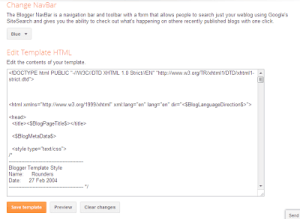
In the rapidly evolving digital landscape of 2025, niche educational websites face unique challenges and opportunities in optimising their online presence. These systems must adopt innovative SEO techniques to improve visibility, engagement, and credibility by including modern technologies and changing user behaviours. This paper explores the best SEO techniques for specialised educational websites by 2025.
Table of Contents
1.) Embrace Mobile-First Indexing and User Experience:
Google has confirmed mobile-first indexing as a crucial ranking criterion since most users access materials on mobile devices. Ensuring a flawless mobile experience is now not optional but rather necessary.
Action Points:
- Responsive Design: Implement responsive design to make sure the material is aesthetically pleasing and easily accessible on all devices, regardless of screen sizes.
- Optimise Core Web Vitals: To improve user experience, concentrate on loading speed, interactivity, and visual stability—core web vitals.
- Simplify Navigation: On smaller screens, make sure menus and buttons are easily navigable to help lower bounce rates and increase involvement.
2.) Prioritise E-E-A-T Principles:
Particularly for educational materials, Google’s focus on Experience, Expertise, Authoritativeness, and Trustworthiness (E-E-A-T) still shapes search results.
Action Points:
- Showcase Credentials: Emphasise to content creators that their qualifications and experience will help to build credibility.
- Cite Reputable Sources: Link to reliable references to support material credibility.
- Secure Your Website: Using HTTPS will help you create trust and guarantee user data security on your website.
3.) Develop High-Quality, Relevant Content:
Still, SEO’s foundation is content. Providing accurate, value-driven, interesting content is crucial for niche educational websites.
Action Points:
- Address Specific Queries: Create material that meets the needs of your target market by addressing questions particular to your field of expertise.
- Update Regularly: Review and update material often to keep it current and interesting.
- Diversify Content Formats: Incorporate videos, infographics, and interactive components to satisfy different learning styles.
4.) Optimise for Voice Search:
The proliferation of voice-activated devices has transformed search behaviours. Optimising content for voice search can significantly enhance discoverability.
Action Points:
- Use Conversational Language: Incorporate into devices natural, question-based sentences that users might speak.
- Implement FAQs: Create specific FAQ sections covering often asked questions in your field of work.
- Focus on Local SEO: Include location-based keywords to grab local voice searches for companies aiming at particular areas.
5.) Leverage AI-Powered SEO Tools:
Using insights into user behaviour, content optimisation, and keyword strategies, artificial intelligence (AI) tools have transformed SEO.
Action Points:
- Utilise AI for Keyword Research: Find trending and pertinent keywords in your field of work using AI-driven platforms.
- Automate Content Suggestions: AI can create content ideas depending on user interests and search behaviour.
- Analyse User Behaviour: Examine user behaviour using artificial intelligence analytics to better target content strategies.

6.) Enhance Site Structure and Navigation:
A well-structured website enhances user experience and helps search engines crawl better.
Action Points:
- Implement Clear Hierarchies: Organise material using headings and subheads to direct search engines and users.
- Use Breadcrumbs: Incorporate breadcrumb navigation to enable users to grasp their position on the website.
- Optimise URL Structures: Check that URLs are clear and incorporate pertinent keywords.
7.) Build Quality Backlinks:
For search engines, backlinks from reliable sources signal authority and credibility.
Action Points:
- Guest Posting: Send pieces to educational-related, authoritative blogs and websites.
- Collaborate with Institutions: Work with educational institutions for cooperative content projects and link exchanges.
- Engage in PR Activities: Participate in public relations campaigns by highlighting notable events or successes to get media attention and backlinks.
8.) Integrate Social Media Strategies:
Although social signals are not direct ranking criteria, active social media participation can increase brand awareness and generate traffic.
Action Points:
- Share Content Regularly: Share regularly blog entries, videos, and other material across pertinent social media platforms.
- Engage with the Audience: Respond to comments, lead conversations, and create a community centred on your niche.
- Utilise Hashtags: Use hashtags tailored to your field of work to improve material findability.
9.) Focus on Local SEO:
Local SEO is essential for educational institutions aiming at particular areas to draw surrounding students and stakeholders.
Action Points:
- Optimise Google Business Profile: Make sure your Google Business Profile is complete with correct data, pictures, and reviews.
- Incorporate Local Keywords: Incorporate local keywords into your content and meta descriptions.
- Encourage Reviews: Invite parents and happy students to leave favourable reviews on local directories.
10.) Monitor and Analyse Performance:
Constant observation makes data-driven decisions possible and helps to refine strategies.
Action Points:
- Use Analytics Tools: Track traffic, user behaviour, and conversions using tools including Google Analytics and Search Console.
- Conduct Regular Audits: Regular audits help to identify and fix problems, including duplicate content or broken links, to improve the state of sites.
- Set KPIs: Create well-defined KPIs to track the effectiveness of SEO campaigns.
These techniques will help specialised educational websites improve their online presence, draw targeted traffic, and create authority in their particular fields. Maintaining success in 2025 and beyond will depend mostly on keeping ahead of changing SEO trends and always improving strategies.

 About the Author:
About the Author:
















Be the first to write a comment.